Allison Bruning's Blog, page 36
July 23, 2013
Mental Health in Progressive America: #What is Asperger's Syndrome
Mental Health in Progessive Era America:
 What is Asperger's Syndrome?
What is Asperger's Syndrome?
“I don’t understand why you two are acting like this and why Cora says he’s stupid. He’s not stupid, he’s wonderful,” Elsa protested. Gideon answered, “Elsa, Franklin has to do things a certain way. Every day of his life he has to follow a strict routine or he will not be able to concentrate on the task he’s asked to do. When he plans to do something it is planned down to the tiniest of details. Sometimes one of those details is so peculiar you would miss it. Not Franklin. He has to complete each step of his plan in precise order.” “He was going to propose at the dance, wasn’t he?” “He was.” Juliette interrupted, “He had it planned all out. How did he react when you told him you knew his intentions?” “He was upset. Cora said it was a panic attack.” Gideon shook his head, “It was too much for him. Elsa, you are right about my son’s intelligence. He is very smart but there are just some things we don’t tell him because we know it will upset him.”- From Elsa: (The Secret Heritage Series: Book 1) by: Allison Bruning
I just love the picture above when thinking about those who were gifted with Asperger's Syndrome during the Progressive Era. As we learned last week the Progressive Era occurred in the United States from the 1890's to 1920's. This era of our history is known as the Progressive Era because of the progressive movement that had swept our country. The Progressives sought to improve the living conditions of women, children, the poor and mentally handicapped that Victorian society had created. The progressive reforms occurred on the local, state and national levels. We will talk more about some of these reforms in other blog postings.
Asperger's Syndrome was not recognized as a mental condition until Austrian Hans Asperger published a definition of autistic psychopathy in 1944 after studying four boys who in his words had "a lack of empathy, little ability to form friendships, one-sided conversations, intense absorption in a special interest, and clumsy movements." Think of these children as little Mr. Spock's from Star Trek.
Hans Asperger also noted that many children with these characteristic tended to become very successful in their chosen careers in adulthood because they were able to hone in on their special interests. These adults could talk for hours about their specialized interests even when their audience had long lost interest in the topic. Some famous people who had Asperger's Syndrome are Albert Einstein, Bill Gates, Sir Isaac Newton, Alfred Hitchcock, Jane Austin, Hans Christian Anderson, Charles Darwin, Thomas Jefferson, Charles Shultz, Mozart, Thomas Edison, Michael Jackson, Mark Twain and Jim Henson.
Hans Asperger worked with patients who had Asperger's Syndrome until his death on October 21, 1980. Despite his hard work Asperger's Syndrome was not well known until after his death. Scientists Tantam (1988) in the UK, Gillberg and Gilbert in Sweden (1989), and Szatmari, Bartolucci and Bremmer (1989) in North America each conducted the first systematic studies of patients with Asperger's Syndrome which was later published in the years show by their names. In 1989, Gillberg and Gillberg in Sweden and Szatmari in North America each proposed a criteria establishing the symptoms required to diagnosis someone with Asperger's Syndrome. Yet Asperger's Syndrome would not be widely recognized until it became a distinct diagnosis by it's inclusion in the 0th published edition of the World Health Organization’s diagnostic manual, International Classification of Diseases (ICD-10). It was added to the fourth edition of the Diagnostic and Statistical Manual of Mental Disorders (DSM-IV) as Asperger's Disorder in 1994. Asperger's Syndrome was named after Hans Asperger.
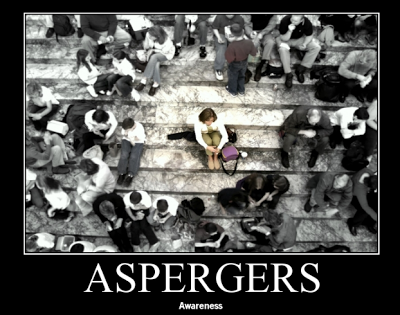
So what are the criteria to be diagnosed with Asperger's Syndrome?
According to the DSM-IV Asperger's Syndrome Criteria is defined as:
(I) Qualitative impairment in social interaction, as manifested by at least two of the following:(A) marked impairments in the use of multiple nonverbal behaviors such as eye-to-eye gaze, facial expression, body posture, and gestures to regulate social interaction(B) failure to develop peer relationships appropriate to developmental level(C) a lack of spontaneous seeking to share enjoyment, interest or achievements with other people, (e.g.. by a lack of showing, bringing, or pointing out objects of interest to other people)(D) lack of social or emotional reciprocity(II) Restricted repetitive & stereotyped patterns of behavior, interests and activities, as manifested by at least one of the following:(A) encompassing preoccupation with one or more stereotyped and restricted patterns of interest that is abnormal either in intensity or focus(B) apparently inflexible adherence to specific, nonfunctional routines or rituals(C) stereotyped and repetitive motor mannerisms (e.g. hand or finger flapping or twisting, or complex whole-body movements)(D) persistent preoccupation with parts of objects
(III) The disturbance causes clinically significant impairments in social, occupational, or other important areas of functioning.
(IV) There is no clinically significant general delay in language (E.G. single words used by age 2 years, communicative phrases used by age 3 years)
(V) There is no clinically significant delay in cognitive development or in the development of age-appropriate self help skills, adaptive behavior (other than in social interaction) and curiosity about the environment in childhood.
(VI) Criteria are not met for another specific Pervasive Developmental Disorder or Schizophrenia."
Unfortunately the DSM-V, released May 2013, has eliminated the term Asperger's Syndrome replacing it with autism spectrum disorder (ASD). This has brought much controversy from the families, friends and professionals of those who care about someone with Asperger's Syndrome. The new criteria has included three levels of they syndrome ranging in severity.
Under the new guidelines, Franklin Raymond would be diagnosed as Level 2 ASD with tendencies to drop to a Level 1 when overstimulated.
 What is Asperger's Syndrome?
What is Asperger's Syndrome?“I don’t understand why you two are acting like this and why Cora says he’s stupid. He’s not stupid, he’s wonderful,” Elsa protested. Gideon answered, “Elsa, Franklin has to do things a certain way. Every day of his life he has to follow a strict routine or he will not be able to concentrate on the task he’s asked to do. When he plans to do something it is planned down to the tiniest of details. Sometimes one of those details is so peculiar you would miss it. Not Franklin. He has to complete each step of his plan in precise order.” “He was going to propose at the dance, wasn’t he?” “He was.” Juliette interrupted, “He had it planned all out. How did he react when you told him you knew his intentions?” “He was upset. Cora said it was a panic attack.” Gideon shook his head, “It was too much for him. Elsa, you are right about my son’s intelligence. He is very smart but there are just some things we don’t tell him because we know it will upset him.”- From Elsa: (The Secret Heritage Series: Book 1) by: Allison Bruning
I just love the picture above when thinking about those who were gifted with Asperger's Syndrome during the Progressive Era. As we learned last week the Progressive Era occurred in the United States from the 1890's to 1920's. This era of our history is known as the Progressive Era because of the progressive movement that had swept our country. The Progressives sought to improve the living conditions of women, children, the poor and mentally handicapped that Victorian society had created. The progressive reforms occurred on the local, state and national levels. We will talk more about some of these reforms in other blog postings.
Asperger's Syndrome was not recognized as a mental condition until Austrian Hans Asperger published a definition of autistic psychopathy in 1944 after studying four boys who in his words had "a lack of empathy, little ability to form friendships, one-sided conversations, intense absorption in a special interest, and clumsy movements." Think of these children as little Mr. Spock's from Star Trek.
Hans Asperger also noted that many children with these characteristic tended to become very successful in their chosen careers in adulthood because they were able to hone in on their special interests. These adults could talk for hours about their specialized interests even when their audience had long lost interest in the topic. Some famous people who had Asperger's Syndrome are Albert Einstein, Bill Gates, Sir Isaac Newton, Alfred Hitchcock, Jane Austin, Hans Christian Anderson, Charles Darwin, Thomas Jefferson, Charles Shultz, Mozart, Thomas Edison, Michael Jackson, Mark Twain and Jim Henson.
Hans Asperger worked with patients who had Asperger's Syndrome until his death on October 21, 1980. Despite his hard work Asperger's Syndrome was not well known until after his death. Scientists Tantam (1988) in the UK, Gillberg and Gilbert in Sweden (1989), and Szatmari, Bartolucci and Bremmer (1989) in North America each conducted the first systematic studies of patients with Asperger's Syndrome which was later published in the years show by their names. In 1989, Gillberg and Gillberg in Sweden and Szatmari in North America each proposed a criteria establishing the symptoms required to diagnosis someone with Asperger's Syndrome. Yet Asperger's Syndrome would not be widely recognized until it became a distinct diagnosis by it's inclusion in the 0th published edition of the World Health Organization’s diagnostic manual, International Classification of Diseases (ICD-10). It was added to the fourth edition of the Diagnostic and Statistical Manual of Mental Disorders (DSM-IV) as Asperger's Disorder in 1994. Asperger's Syndrome was named after Hans Asperger.

So what are the criteria to be diagnosed with Asperger's Syndrome?
According to the DSM-IV Asperger's Syndrome Criteria is defined as:
(I) Qualitative impairment in social interaction, as manifested by at least two of the following:(A) marked impairments in the use of multiple nonverbal behaviors such as eye-to-eye gaze, facial expression, body posture, and gestures to regulate social interaction(B) failure to develop peer relationships appropriate to developmental level(C) a lack of spontaneous seeking to share enjoyment, interest or achievements with other people, (e.g.. by a lack of showing, bringing, or pointing out objects of interest to other people)(D) lack of social or emotional reciprocity(II) Restricted repetitive & stereotyped patterns of behavior, interests and activities, as manifested by at least one of the following:(A) encompassing preoccupation with one or more stereotyped and restricted patterns of interest that is abnormal either in intensity or focus(B) apparently inflexible adherence to specific, nonfunctional routines or rituals(C) stereotyped and repetitive motor mannerisms (e.g. hand or finger flapping or twisting, or complex whole-body movements)(D) persistent preoccupation with parts of objects
(III) The disturbance causes clinically significant impairments in social, occupational, or other important areas of functioning.
(IV) There is no clinically significant general delay in language (E.G. single words used by age 2 years, communicative phrases used by age 3 years)
(V) There is no clinically significant delay in cognitive development or in the development of age-appropriate self help skills, adaptive behavior (other than in social interaction) and curiosity about the environment in childhood.
(VI) Criteria are not met for another specific Pervasive Developmental Disorder or Schizophrenia."
Unfortunately the DSM-V, released May 2013, has eliminated the term Asperger's Syndrome replacing it with autism spectrum disorder (ASD). This has brought much controversy from the families, friends and professionals of those who care about someone with Asperger's Syndrome. The new criteria has included three levels of they syndrome ranging in severity.
Under the new guidelines, Franklin Raymond would be diagnosed as Level 2 ASD with tendencies to drop to a Level 1 when overstimulated.
Published on July 23, 2013 15:04
#Writer's Beware: These Books Will Change Your Life #inspiration #creativity #IAmWriting
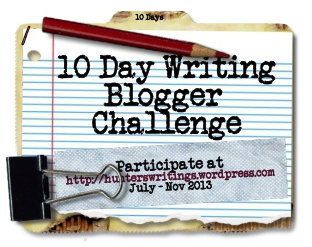
Help! I wanna write right. What should I read?
I love inspiring others to explore their creative side in a whatever art form speaks to them the most. I am a very creative person who has been obsessed with the arts since I was a little girl. My mom, a former art major in college, use to take me to the Columbus Museum of Art and we had season passes to the BalletMet in Columbus. My Grandma Carr was a major influence in the development of my literary talents. I could spend all day writing about how much the arts have made me into the thriving literary artists I am today. I still love to participate in a wide variety of art forms but have made my living as a master of the written word.
Today is the fourth day of the 10 day writing blogger challenge and the following is my prompt.
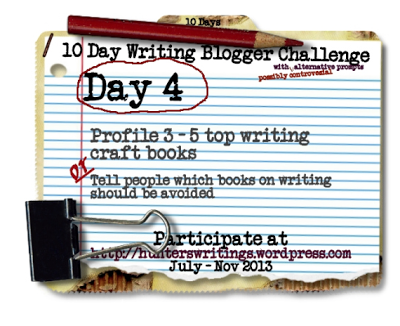 It is so hard to chose just 3 - 5 writing books. As you learned from my author's bio I have just graduated with MFA in Creative Writing from Full Sail University. I had to read many wonderful writing books. Throughout my life I have been exposed to other writing books as well. Some weren't that great and others stuck with me as I navigated through my writing career. So here is my list of the best writing books to read.
It is so hard to chose just 3 - 5 writing books. As you learned from my author's bio I have just graduated with MFA in Creative Writing from Full Sail University. I had to read many wonderful writing books. Throughout my life I have been exposed to other writing books as well. Some weren't that great and others stuck with me as I navigated through my writing career. So here is my list of the best writing books to read. 1) This first book is for any creative artists. I had first come across this book in my studies at Full Sail.
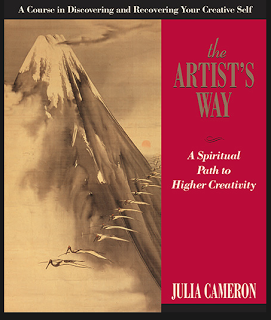
The Artist’s Way is the seminal book on the subject of creativity. An international bestseller, millions of readers have found it to be an invaluable guide to living the artist’s life. Still as vital today—or perhaps even more so—than it was when it was first published one decade ago, it is a powerfully provocative and inspiring work. In a new introduction to the book, Julia Cameron reflects upon the impact of The Artist’s Way and describes the work she has done during the last decade and the new insights into the creative process that she has gained. Updated and expanded, this anniversary edition reframes The Artist’s Way for a new century.
I was asked to read the introduction for this book and go on an artist date for my class. I fell in love with this book as soon as I read the introduction. You see, I know God has called me to a life as a writer. I believe he not only gave me this calling but has given me the skills to do so. So being a creative artists, to me, is really connected to my spiritual self. This book supports that viewpoint and encourages creative artists to explore their creative selves through a spiritual viewpoint and not through a physical one where we often come up short as artists. You can find this book on Amazon at http://www.amazon.com/The-Artists-Way-Julia-Cameron/dp/1585421464/
2) This next book is on this list not only because it is the most amazing book for screenwriters but because it has a nostalgic trait for me. You see when I was in Mount Vernon Middle School in Mount Vernon, Ohio this was one of the writing books that my mom had bought for me. I was a Trekkie. Ok, so I was obsessed with Star Trek. I could tell you the entire Star Trek history, all about the worlds, the working of the ship and all the character bios. It became so real to me that I began to dream up stories that eventually worked their way into some pretty awesome fan fiction. In fact, one of the web series I am creating right now is based on one of my Start Trek Fan Fiction pieces I wrote in middle school.

I read this book from front to cover, took notes and made it the holy bible for the Star Trek: TNG TV episodes that I wrote. I had it in my head that the studio would fall in love withe my show and want to use it. Years past, and imagine my surprise when we are given this book to read at Full Sail University. You know what? Once again, this book has become my holy grail for screenwriter. Live Long and Prosper, Syd Field. You are my hero.
At last! The classic screenwriting workbook—now completely revised and updated—from the celebrated lecturer, teacher, and bestselling author, Syd Field: “the most sought-after screenwriting teacher in the world”*
No one knows more about screenwriting than Syd Field—and now the ultimate Hollywood insider shares his secrets and expertise, completely updating his bestselling workbook for a new generation of screenwriters. Filled with new material—including fresh insights and anecdotes from the author and analyses of films from Pulp Fiction to Brokeback Mountain—The Screenwriter’s Workbook is your very own hands-on workshop, the book that allows you to participate in the processes that have made Syd Field’s workshops invaluable to beginners and working professionals alike. Follow this workbook through
to the finish, and you’ll end up with a complete and salable script!
Learn how to:
• Define the idea on which your script will be built
• Create the model—the paradigm—that professionals use
• Bring your characters to life
• Write dialogue like a pro
• Structure your screenplay for success from the crucial first pages to the final act
Here are systematic instructions, easy-to-follow exercises, a clear explanation of screenwriting basics, and expert advice at every turn—all the moment-to-moment, line-by-line help you need to transform your initial idea into a professional screenplay that’s earmarked for success.
The Perfect Companion Volume to Syd Field’s Revised and Updated Edition of Screenplay: The Foundations of Screenwriting
*Hollywood Reporter
From the Trade Paperback edition.
Available on Amazon at http://www.amazon.com/Screenwriters-Workbook-Revised-ebook/dp/B001O1O73K/
3) My third book is also a screenwriter's best friend. I was introduced to this book at Full Sail and love it. It picks up where Syd Field left off. AS IF SYD FIELD COULD LEAVE ANYTHING OUT! Ok, can you say "Allison is a huge Syd Field fan?" LOL.
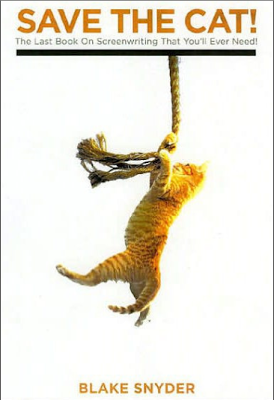
This ultimate insider's guide reveals the secrets that none dare admit, told by a show biz veteran who's proven that you can sell your script if you can save the cat!
Available on Amazon at: http://www.amazon.com/Save-Last-Book-Screenwriting-Youll/dp/1932907009/
Published on July 23, 2013 12:30
July 22, 2013
Field of Grace: A Dream Come True. #screenwriting #Christian #IamWriting

Field of Grace:
A post WWI Drama you don't want to miss
This isn't your typical post from me but I have some wonderful news to share with all of you. My full length feature screenplay is being considered for production by Junto Box Films. I just need all of your help. Can you please go to this site, register, follow my project and give it a 5 star review? The five star review is very important. I need 80 star reviews of 3 or better stars. As I write this I only have 19. Please help my dream come true.
http://www.juntoboxfilms.com/projects/field-of-grace#.Ue2YChaWeZP

Published on July 22, 2013 13:38
Who am I? Inquiring Minds Want To Know

Back to Basics: Who is Allison Bruning?
Welcome to Day 3 of the 10 Day Writing Blogger Challenge. Today I was asked:
 So here it goes. A bio about yours truly.
So here it goes. A bio about yours truly. Allison Bruning has had a passion for writing since childhood. She originally hails from Marion, Ohio but lives in Louisville, Kentucky with her husband and their Australian Cattle Dog, Lakota Sioux. Her writings are typically set in Ohio and Kentucky but she has also written about Ireland, France, and West Texas. Allison is also from Alpine, Texas. Her husband is from Marfa, Texas. Both small towns are located in the Big Bend Region of Texas.
Allison's father, Roland Irving Bruning, was the son of German immigrants who came to the United States at the turn of the 20th century. Her paternal grandmother was from the Black Forest region of German while her paternal grandfather was from Northern Germany. Allison has one brother. Her mother's family had immigrated from Scotland, Ireland and England during the 17th century. She is a member of the Daughters of American Revolution, tracing her linage to Private Rueben Messenger of Connecticut. Allison enjoys family stories, history and genealogy. She finds inspiration for her historical fiction through these avenues. Her current series, The Secret Heritage, is based on a family secret that she learned about while conducting genealogical research on her Grandfather Carr's side of the family.
Allison's educational background includes a BA in Theatre Arts with a minor in Anthropology and a Texas Elementary Teaching certificate. Both acquired at Sul Ross State University in Alpine, Texas. Allison received National Honor Society memberships in both Theatre Arts and Communication. She was also honored her sophomore year with admission into the All American Scholars register. She holds graduate hours in Cultural Anthropology and Education. In 2007, Allison was named Who's Who Among America's Educators. She is also the recipient of the Girl Scout Silver and Gold Awards. Allison will received her Masters of Fine Arts in Creative Writing at Full Sail University on June 28, 2013. Since graduation she has been working with Film Smith Productions on several projects.
Allison is a bestselling author and owner of Mountain Springs House. Mountain Springs House is a publishing house located in Louisville, Kentucky. It's mission is to provide a personal publishing experience to every author. Their goal is make every author a bestselling author. In order to achieve this goal, Allison has sought out the best editors, formattors and graphic artists to bring the author's dream into reality. She also helps her authors with marketing advice and is open to them from 8am to 8pm everyday.
When she is not writing her novels or running Mountain Springs House, Allison works in the media as a screen and scriptwriter. She is currently working on two webseries and three music videos. She has written a full length feature film, several shorts and other projects. All of her projects are in various stages of production.
Allison interests include Ohio Valley history, anthropology, travel, culture, history, camping, hiking, backpacking, spending time with her family, and genealogy. She can be found on Facebook at https://www.facebook.com/AllisonBruning. She is also on twitter @emeraldkell. Her blog can be found at http://allisonbruning.blogspot.com. Her author page on Goodreads is http://www.goodreads.com/emeraldkell and her Amazon author page may be found at http://amzn.to/LZ0UsT
Well there you have it. My author's bio. Enjoy!
Published on July 22, 2013 07:06
July 21, 2013
A #Writer's Ten Commandments #author #IAmWriting
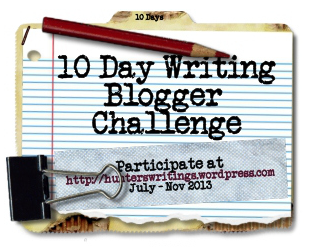
Thou Shall Not.... A Writer's Ten Commandments
Today I was asked to write 10 writing confessions or take the day off. I thought long and hard about the topic I was given. After much consideration I thought I would construct ten commandments every writer should follow in order to create their bestselling masterpieces. So here goes nothing.
1)Always back up your work. The Gremlin in the computer who steals your work can't break into Dropbox.
2) Don't dismiss the plot bunnies whenever they run rampant. Just corral them in a notebook for a later use.
3)Don't neglect your inner child or it will stop talking to you. Go on an artist date to satisfy it.
4) It's ok to talk to your characters and listen to them when they talk back.
5)Stuck in a rut? Write your way out of it. Keep writing and never give up.
6) Don't forget to interact with other people inside and outside your social networks.
7) Don't let that supporting character hijack your manuscript. Write their ideas in a notebook and move forward with the script.
8) Read in your genre.
9) When the editor calls and wants your revisions don't keep them waiting.
10) STAY POSITIVE!!!
Published on July 21, 2013 13:36
New Worlds, New Adventures: An #Author Interview with Cody Martin #Japan #Sci-fi
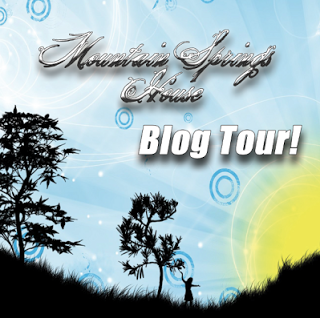
Meet Cody Martin, author of "The Adventure Hunters."
This week I was asked to interview an author for the Mountain Springs House Blog Tour. As a screenwriter and a novelist I was interested in interviewing another writer who has explored both the literary and media worlds. Cody Martin was the perfect choice for this task. His book, "The Adventure Hunters", will be released by Mountain Springs House on October 9, 2013.
Welcome to Inside the Secret World of Allison Bruning, Cody. I’m delighted to have you with us. Can you please tell my readers a little bit about yourself and your book?
Thanks for having me, Allison. I’m glad to be here. As for me, I’m a SF and fantasy fan, as well as loving action movies. I grew up in Wyoming then moved to Alabama. After going to the University of Alabama I moved to Japan,where I live now. I’ve been there for six years so far. I do freelance writing and blogging, as well as work as a part-time English teacher. Adventure Hunters was originally a screenplay I wrote that I turned into novel form.
What inspired you to write Adventure Hunters?
It began more than seven years ago, shortly after Lord Of The Rings came out. My stories up until then were mostly SF, so I wanted to try my hand at fantasy. I didn’t want to do a very Tolkien-esque world, so I went very low-fantasy style.
How did you start on your literary journey?
It was an article on CNET about self-publishing. I had written some screenplays but was having trouble entering them into screenplay contests. I read the CNET article, checked out the sites like Smashwords and Kindle DPS and thought I would give it a try. I rewrote Adventure Hunters into prose form and went on from there. I fell in love with writing more after that. I guess in some way I have always wanted to be a writer but now I’m finally listening to that inner voice.
What is your writing process? Do you plan ahead or just write? Do you have a set time to write? We want to know everything.
I’m still struggling with the writing process. AH took seven years because I would write for weeks, take months off at a time, go back to it, repeat the cycle. But I’m an outliner. I have tried to write stories by the seat of my pants but ended up getting lost and I abandoned them. When I outline, I split my story into four acts, figure out the opening, ending, plot point 1, plot point 2, and the midpoint. Then I do general outlines in each act, covering the basic need-to-know information. After I do that, making sure the structure works (after writing screenplays for so long, I’m big on structure), I’ll write the actual prose. I don’t have every single detail planned out but my outline is my blueprint. I have all the basics covered, the details come to me in the actual writing. I’ve learned that a lot changes during the writing, so I may have to make my outlines more specific. I’ve occasionally hit a wall because I didn’t have something thought out well enough. My two favorite authors are complete opposites when it comes to outlines: Stephen King doesn’t outline and Jeffery Deaver writes 100-140 page outlines. Writing in the early afternoon after lunch is my prime writing time.
 Cody and Yoko Martin
Cody and Yoko MartinI understand that you live in Japan. What is the one thing back in the states that you miss the most?
Food. I don’t really like Japanese food. And it’s amazing that things you would think are the same everywhere are different. There is no breakfast sausage here (like Jimmy Dean’s), no pork and beans, stuff like that. There are a few import food stores but the price is outrageous. To buy a regular box of Kraft macaroni and cheese, I have to go to an import store where it is nearly $2.50 per box.
What is one thing in Japan that you couldn’t live without and why?
My wife Yoko. She is the reason I’m staying. We met in Japan and got married in Hawaii. She has supported me in my writing pursuits and is the best thing that has happened to me.
I understand that you a Trekkie. If you could work under any captain which one would you chose and why?
Good question! I find Archer to be the most personable, he looks like a good guy to hang around but Picard is the most trustworthy. I’d rather serve with Picard.
What department and rank would you like to have on that ship? Why?
Something in sciences. Hardly anyone in a blue uniform dies! Seriously, not command. I am not a leader and being on the bridge crew would be such a demanding job. I’d probably make it to lieutenant or lieutenant commander, not above that I think. And I’d serve on the Enterprise-E. It’s my favorite Trek ship.
Do you have any other books in the works? If so, what are they and what are they about?
I am in-between drafts of a SF book called The Super School Uniform, about a Japanese junior high school girl who gets an alien suit that grants her superpowers and now I’m in the planning phase of a horror novel. I intend to return to the world of Adventure Hunters, I just want to try a few different things first.
Thank you for joining me today. What is one thing you would like to say to my readers before we leave today?
Feedback and comment! Authors have Facebook pages, Twitter, Amazon and Goodreads profiles. Talk to us. Engage us in conversation. Let us know how we are doing. With social media, the distance between fans and professionals (actors, writers, directors, musicians, what have you) is diminishing. If you like, or even don’t like, our stuff please let us know. Get to know us on a more personable level. It’s especially easier with independent authors because we are our own staff. Readers today don’t have to wait until book signings or conventions to chat with writers. As Stephen King said, in truth most writers are needy. We spend so much time writing alone, closed off. When we finally open the door and get our book into the world and into the reader’s hands, we need to know it was worth it to you.
Who is Cody Martin?

An author and freelance writer, Cody L. Martin grew up in the beautiful mountains of Wyoming where he became an avid sci-fi fan. He wrote his first Star Trek fan fiction in high school and has since been branched out into sci-fi and action stories. Cody wrote his first novel Adventure Hunters in the same vein. He currently writes the monthly Star Trek column To Boldly Go… for In Genre. He works in Japan as a part-time English teacher in Yamaguchi Prefecture, and lives happily with his beautiful wife, Yoko. When he isn't writing he enjoys watching movies, reading and listening to Morning Musume, Berryz Koubou, C-ute, and other J-pop singers.
Published on July 21, 2013 06:11
July 20, 2013
Strange Things Are Admist on Allison's #Blog #IAmWriting
Something New and Fun onInside The Secret World of Allison Bruning
What in the world is Allison doing writing on a Saturday? It's not her normal writing routine. I can hear you say as you read this blog today. I know, I know we have started a new series on Tuesdays and Thursdays. Don't worry what I have planned won't interrupt that nor my weekly Vlog on Sundays.
Today I've decided to accept the 10 Day Writing Blogger Challenge.
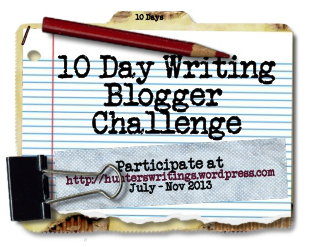 Each day, for the next ten days, I will be given a prompt to write about then will post it on my blog. Today's prompt is........
Each day, for the next ten days, I will be given a prompt to write about then will post it on my blog. Today's prompt is........
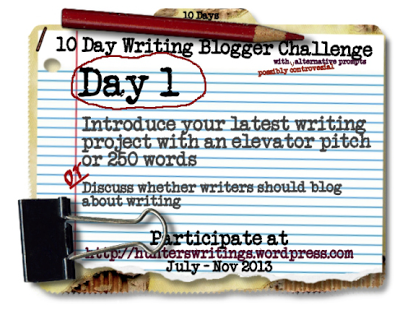
I am currently writing book one of a historical fiction series titled The Secret Heritage. The Secret Heritage is a more personal series for me than the Children of the Shawnee because it was inspired by events that happened in my family. The series follows Elsa Garrett’s life as she struggles to keep her family together throughout a wide variety of social disasters that are derived from her lover’s low functioning Asperger’s Syndrome. The names of the people involved have been changed and so have some of the circumstances. You can learn more about what inspired me to write Elsa two posts back. Book 1, titled Elsa, starts after Elsa and Franklin have dated for about a year. Elsa is sixteen years old and lives with her poverty stricken parents. Her boyfriend, Franklin Thaddeus Raymond, is an eighteen-year-old middle class inventor who has low functioning Asperger’s Syndrome. Franklin wants to propose but after he has a seizure all of his plans to propose to Elsa have come to a halt. He doesn’t know how to propose to her even though she wants to marry him. Worse yet, Ohio Law forbids anyone with epilepsy or mentally ill from marriage. Elsa must find a way to defend his rights to marry her. Just when she believes she has everything figured out a solution her plans are shattered by the death of her sister and her father retracting Franklin’s permission to marry her. With everyone against them how can Elsa and Franklin ever marry?
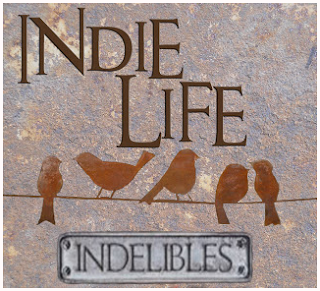
The other challenge I will be participating in is the Indelibles Indie Life. Every second Wednesday of the month I will be posting something useful about being an independent writer. I have been writing independently for five years and all of my books are Amazon Bestsellers. I also own Mountain Springs House, a publishing company in Louisville, Kentucky. I enjoy helping authors. I want to give back to the literary community so other authors might have success with their books.
What in the world is Allison doing writing on a Saturday? It's not her normal writing routine. I can hear you say as you read this blog today. I know, I know we have started a new series on Tuesdays and Thursdays. Don't worry what I have planned won't interrupt that nor my weekly Vlog on Sundays.
Today I've decided to accept the 10 Day Writing Blogger Challenge.
 Each day, for the next ten days, I will be given a prompt to write about then will post it on my blog. Today's prompt is........
Each day, for the next ten days, I will be given a prompt to write about then will post it on my blog. Today's prompt is........
I am currently writing book one of a historical fiction series titled The Secret Heritage. The Secret Heritage is a more personal series for me than the Children of the Shawnee because it was inspired by events that happened in my family. The series follows Elsa Garrett’s life as she struggles to keep her family together throughout a wide variety of social disasters that are derived from her lover’s low functioning Asperger’s Syndrome. The names of the people involved have been changed and so have some of the circumstances. You can learn more about what inspired me to write Elsa two posts back. Book 1, titled Elsa, starts after Elsa and Franklin have dated for about a year. Elsa is sixteen years old and lives with her poverty stricken parents. Her boyfriend, Franklin Thaddeus Raymond, is an eighteen-year-old middle class inventor who has low functioning Asperger’s Syndrome. Franklin wants to propose but after he has a seizure all of his plans to propose to Elsa have come to a halt. He doesn’t know how to propose to her even though she wants to marry him. Worse yet, Ohio Law forbids anyone with epilepsy or mentally ill from marriage. Elsa must find a way to defend his rights to marry her. Just when she believes she has everything figured out a solution her plans are shattered by the death of her sister and her father retracting Franklin’s permission to marry her. With everyone against them how can Elsa and Franklin ever marry?

The other challenge I will be participating in is the Indelibles Indie Life. Every second Wednesday of the month I will be posting something useful about being an independent writer. I have been writing independently for five years and all of my books are Amazon Bestsellers. I also own Mountain Springs House, a publishing company in Louisville, Kentucky. I enjoy helping authors. I want to give back to the literary community so other authors might have success with their books.
Published on July 20, 2013 13:01
July 18, 2013
#Progressive Era America: It's Time For A Change! #history #USA #America
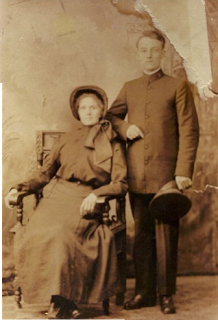 My great grandparents Dallas and Lina McCardle
My great grandparents Dallas and Lina McCardleIt's Time for a Change Who were the Progressives?
The Progressive Era was an interesting time in American history that lasted from the 1890's to the 1920's. When thinking about the Progressive Era its important to keep in mind the generation that were adults during this time were children of Civil War veterans. The Civil War had been the bloodiest was ever fought in the United States at that time. More than 620,000 lives were loss and there were over 1,100,000 causalities. Most of the families where these men and women grew up in were broken homes due to the war.
Another thing to keep in mind is that these young adults had not only grown up with the aftermath of the Civil War but had grown up in the Victorian Era. Queen Victoria had reigned over Great Britain from June 20, 1837 until her death on January 22, 1901. She had greatly influenced the social customs in Great Britain and the United States. Victorian society had many strict rules and regulations a person had to follow in order to be accepted by family, friends and society. Society was based on a class system that made it almost impossible for anyone to raise their standards of living. When Queen Victoria died her son, Edward came to the throne. King Edward VII brought forth the Edwardian Era which lasted from 1901 to 1910. The cultural transition from Victorian to Edwardian Era was slow for the older generation but the children of the Civil War veterans were quick to adapt. In the United States the Edwardian Era is more commonly known as The Gilded Age.
The Progressive Movement began during the late Victorian Era and lasted until the end of the Edwardian Era. The movement was at it's height at the beginning of the 20th century. There were many social injustices that occurred under the Victorian Era that the children of the Civil War veterans wanted to see changed. They were tired of living under the strict Victorian societal rules that caused discrimination, prejudice and social injustice. They wanted a progressive reformation.
Join me Tuesday as we learn about Asperger's Syndrome then again on Thursday as we continue with our in depth look into the Progressive Movement of the Early 20th Century.
Published on July 18, 2013 05:14
July 16, 2013
A #Secret #Heritage Revealed Inspires Author
Welcome back to my blog. With the release of Elsa (The Secret Heritage Series: Book 1) quickly approaching I have decided to change things up a little bit on my blog.
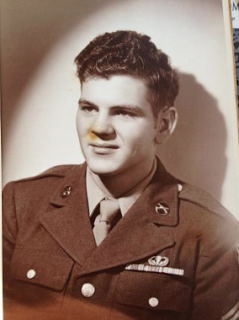 Grandpa Carr's WWII picture
Grandpa Carr's WWII picture
Elsa takes place during an exciting time in American History. Last week I introduced you to Elsa Garrett, the main character in The Secret Heritage series. Unlike my other series, Children of the Shawnee, this series is based on actual events that happened in my family. I was inspired to write this series after I learned about the events while conducting genealogical research on my Grandfather Freeland Devere Carr's side of the family. I was very interested in learning about his grandparents Freeland and Elva Raymond. I was very hard to find information on them because of some family dynamics. My grandfather and his siblings never spoke much about their grandparents and I don't think they knew much about them. Their mother had died in a kerosene fire when they were young so they never knew much about her side of the family. After years of research I was finally able to locate information about Freeland and Elva Raymond. The things I learned were so dramatic and interesting I knew it would make for a great story. I began to dig deeper into my research and a few months later The Secret Heritage series was born. I am still researching on this side of the family because I can't get past Freeland Raymond's parents. I hope someday I will be able to do so.
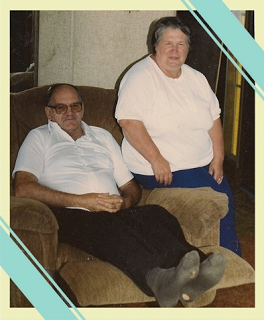 Grandpa and Grandma Carr
Grandpa and Grandma Carr
The Secret Heritage Series traces the life of Elsa Garrett as she deals with the love of her life, Franklin Thaddeus Raymond and his Asperger's Syndrome. People with Asperger's do not understand social cues and that can cause problems for them and their families. I will not go to much into details about what will happen to Elsa because I don't want to give the story away. I do not know if Freeland Raymond had Asperger's Syndrome or not. The real story of Freeland and Elva Raymond's lives is full of so much drama that it could have stood alone without adding the Asperger's Syndrome into it. Yet I felt I needed to add that aspect in there because it was important to me. You remember my Grandfather Freeland Devere Carr? Well he married Betty Louise Danner, who had Asperger's Syndrome. Her father had Asperger's, too. Their youngest son has Asperger's Syndrome as does one of their daughters and grandchild. I never knew that Asperger's Syndrome ran in my family until a few years ago. When I learned that it was a lighbulb moment for me. All the strange things that happened in my family started to make sense. I added the Asperger's Syndrome to the storyline because I wanted to honor the relationship my aunt and uncle have. You see not alot of people who have Asperger's Syndrome can hold a marriage together for a long time. My grandfather was only able to hold his marriage together because he loved his wife so much he made the marriage work despite whatever struggles they endured. My aunt and uncle do the same. I wanted to show that deep devotion and love in my series.
The Secret Heritage Series takes place in Marion County, Ohio from 1905 to 1943. The first book, Elsa, takes place in 1905. There will be at least 10 books in the series.
Join me on Tuesdays as we explore Asperger's Syndrome and how the mentally ill were treated at the beginning of the 20th century. Then join me again on Thursdays as we explore Progressive Era America.
 Grandpa Carr's WWII picture
Grandpa Carr's WWII pictureElsa takes place during an exciting time in American History. Last week I introduced you to Elsa Garrett, the main character in The Secret Heritage series. Unlike my other series, Children of the Shawnee, this series is based on actual events that happened in my family. I was inspired to write this series after I learned about the events while conducting genealogical research on my Grandfather Freeland Devere Carr's side of the family. I was very interested in learning about his grandparents Freeland and Elva Raymond. I was very hard to find information on them because of some family dynamics. My grandfather and his siblings never spoke much about their grandparents and I don't think they knew much about them. Their mother had died in a kerosene fire when they were young so they never knew much about her side of the family. After years of research I was finally able to locate information about Freeland and Elva Raymond. The things I learned were so dramatic and interesting I knew it would make for a great story. I began to dig deeper into my research and a few months later The Secret Heritage series was born. I am still researching on this side of the family because I can't get past Freeland Raymond's parents. I hope someday I will be able to do so.
 Grandpa and Grandma Carr
Grandpa and Grandma CarrThe Secret Heritage Series traces the life of Elsa Garrett as she deals with the love of her life, Franklin Thaddeus Raymond and his Asperger's Syndrome. People with Asperger's do not understand social cues and that can cause problems for them and their families. I will not go to much into details about what will happen to Elsa because I don't want to give the story away. I do not know if Freeland Raymond had Asperger's Syndrome or not. The real story of Freeland and Elva Raymond's lives is full of so much drama that it could have stood alone without adding the Asperger's Syndrome into it. Yet I felt I needed to add that aspect in there because it was important to me. You remember my Grandfather Freeland Devere Carr? Well he married Betty Louise Danner, who had Asperger's Syndrome. Her father had Asperger's, too. Their youngest son has Asperger's Syndrome as does one of their daughters and grandchild. I never knew that Asperger's Syndrome ran in my family until a few years ago. When I learned that it was a lighbulb moment for me. All the strange things that happened in my family started to make sense. I added the Asperger's Syndrome to the storyline because I wanted to honor the relationship my aunt and uncle have. You see not alot of people who have Asperger's Syndrome can hold a marriage together for a long time. My grandfather was only able to hold his marriage together because he loved his wife so much he made the marriage work despite whatever struggles they endured. My aunt and uncle do the same. I wanted to show that deep devotion and love in my series.
The Secret Heritage Series takes place in Marion County, Ohio from 1905 to 1943. The first book, Elsa, takes place in 1905. There will be at least 10 books in the series.
Join me on Tuesdays as we explore Asperger's Syndrome and how the mentally ill were treated at the beginning of the 20th century. Then join me again on Thursdays as we explore Progressive Era America.
Published on July 16, 2013 05:44
July 14, 2013
Staying #Positive in the Pool of #Publishing
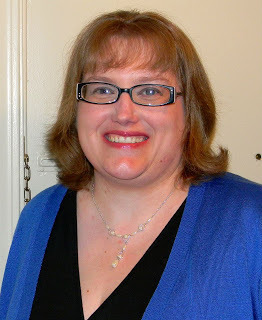
Let's Stay Positive People!
This week I'm taking a break from talking about my Camp NaNoWriMo experience to address new authors about the importance of staying positive throughout your entire publishing experience.
Published on July 14, 2013 14:07



